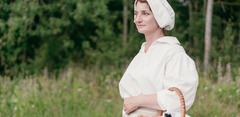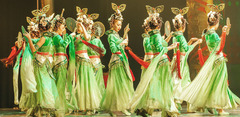“10… 9… 8…” Everyone readies their champagne glasses. “5… 4… 3…” And the cheers begin. “2… 1… Happy New Year!”
One of the largest global celebrations, New Year’s Eve and New Year’s Day mark the change from the last day of one year on December 31 and the beginning of a new year on January 1. Festivities reverberate around the world as each time zones passes midnight on January 1, bringing myriad emotions for many.
This year especially we shall look upon it with relief, nostalgia, and hope, as we all look to a future of fewer COVID-19 infections, deaths, restrictions, and hope for greater health and wealth. For 2020, nothing’s quite the same and plans we’ve made have smashed by lockdowns, quarantines, and self-isolations. Celebrations, events, and parties around the world were curtailed or canceled in the name of COVID-19 to curb the spread of this virus. Are there ways to still celebrate in the festivities of New Year’s Eve and New Year’s Day?
To understand just why New Year’s Eve and New Year’s Day are so special to people, we need to look at just what inspired the festivities in the first place – and that can help us find more ways to celebrate New Year’s Eve and New Year’s Day. New Year 2020 will be an unconventional celebration.
History of New Year’s:
The origin of New Year’s Eve and New Year’s Day celebrations were first recorded in Europe and Asia before the founding and growth of Christianity some 2,000 years ago. Based upon early Christian beliefs, New Year’s Eve and New Year’s Day festivities became entrenched in wider societies and combined with Christian events to become the celebrations we honor today. The Happy New Year’s religious background has mostly eroded and accepted by many cultures and religions around the world to mark the end of one calendar year and the start of another.
Is it “Happy New Year” or “Happy New Years?”
First, let’s answer one of the most frequently asked questions. The correct phrase is “Happy New Year” as New Year’s Day is the proper noun of the day we celebrate the new year.
Why do we celebrate New Year’s Eve?
The event, the transition from December 31 to January 1, is commemorated with “Happy New Year” fireworks displays and is usually toasted with champagne or other sparkling wines. Each country and city celebrates its New Year’s Eve at different times because of their location across various time zones. Counting down the seconds from 10 to 1 is a one of the most treasured of New Year’s Eve traditions. Holding parties to bring in the New year sees people attend formal events, costume parties, small parties at homes, to mass gatherings on beaches and city squares. At the stroke of midnight, party-goers wish one another “Happy New Year” by exchanging hugs, wishes, kisses, and singing songs together.
Why do we sing “Auld Lang Syne” at New Year’s?
Wishing loved ones and others a “Happy New Year” is a time-old New Year tradition, but there is another one that joins many in a spirit of enthusiasm. In most parts of the world, like in America, the Scottish poem “Auld Lang Syne” is sung after midnight. It is a Scottish tradition to sing “Auld Lang Syne” to bid farewell or to end an occasion or specific time. We now use it to close out a year and bring in a new year at the stroke of midnight on New Year’s Eve. We can translate this song to mean “days gone by” or “old times,” and the chorus can be translated as “for the sake of old times.”
One reason this song is so famously sung at New Year’s Eve celebrations in America and why it has become one of the most important New Year’s songs is thanks to a 1920s dance-band leader and entertainer Guy Lombardo. He hosted a New Year’s Eve concert in New York City in 1929, and he and his band played Auld Lang Syne at the stroke of midnight. This Scottish song gained greater popularity in this way and is translated into many languages and played across the world at New Year’s Eve festivities.
Why do we celebrate New Year’s Day?
New Year in USA t marks this day as a public holiday. While, technically, it carries on directly from the New Year’s Eve parties, many bring in New Year’s Day – January 1 – with friends and family over lunchtime to recover from the previous evening’s festivities. It is also a day filled with nostalgia as people share their highs and lows of the previous year, and they share their hopes for the New Year as New Year’s Resolutions.
What are New Year’s Resolutions?
These are promises made by people to themselves, on ways to improve something in their lives. You’ve likely come across the “New Year New Me” posts on social media. Popular New Year’s resolutions include quitting smoking or alcohol, promising to lose weight or exercise more, to aim for a job raise or promotion, to read more books, to save more money, and such lifestyle ambitions.
These aims and goals give people something to work towards, to strive to, and it gives people hope that they’re able to improve themselves. In fact, sharing New Year’s resolutions has been credited to the Babylonians who started this tradition some 4,000 years ago.
Which is the first country to celebrate New Year’s?
This honor falls to Tonga, Samoa and Kiribati in the Pacific, some 18 hours ahead of New York City. New Zealand then follows, with Australia, Japan, Korea, China and the Philippines in the next five hours. By the time the celebrations have ended in Tonga, we in the USA are only donning our costumes and making cocktails to prepare for the evening’s festivities.
Can we still celebrate New Year’s Eve and New Year’s Day during COVID-19?
While the pandemic has shuttered many aspects of societies, and with restrictions and limitations guiding our public movements this winter, they have cancelled many of the largest public festivities in the wake of tightened federal and state regulations.
The apple of the world’s eye on New Year’s Eve, New York City’s spectacular Times Square celebration, has already been cancelled for 2020. Dropping at the stroke of midnight, the famous ball drop will still carry on, however they permit no spectators or partygoers, as New York City urges citizens to stay home for this celebration. The same has also announced for Las Vegas’ popular street party, and similar announcements have echoed across the USA over the past few weeks.
Unfortunately for many, a virtually hosted New Year’s evening’s festivities will be the order of the day with friends and family. The spike in coronavirus infections has prompted leaders to quell mass public gatherings that could cause being ‘super spreader’ events. After all, safety comes first.
What is open on New Year’s Day?
As New Year’s Day, January 1, is a federal holiday, all banks, law offices, federal offices, stock markets, national parks, and most retail businesses will be closed. Some grocery and convenience stores will be open on New Years's Day for limited trading hours.
What to do for New Year’s Eve 2020?
Despite staying put in our homes for New Year’s Eve and New Year’s Day, we can still celebrate with our loved ones, far and near. We have compiled a list of suggestions for you to consider safely marking this fun-filled time:
1) Watch “Dick Clark’s New Year’s Rockin’ Eve with Ryan Seacrest” concert with the Times Square ball drop is one of the must-see New Year’s events.
2) Host a video call with your family and friends.
3) Just because you’re at home for New Year’s Eve doesn’t mean you can’t dress up in a fancy outfit for in costume.
4) Create some fun and festive appetizers and dishes in your kitchen.
5) Stream your favourite movies or series in an all-night binge-watching session.
6) Host a virtual dance party or a karaoke night.
7) Make sure the fridge is stocked with your favourite dessert and sparkling wine or champagne to mark midnight.
Conclusion:
Bidding farewell to 2020 and ringing in 2021 with friends and family will still feel special. By putting in a little extra effort, you can plan a fantastic night’s festivities with your favourite people. While we won’t be able to share the same space, we can create virtual celebrations that can long be remembered as fun. Unlike in previous years, 2020 has left its mark. How you bid it farewell and usher in 2021 will be up to you: dance until your heart’s content, share in conversations with your loved ones, enjoy quality time with your significant other, or dive into hours of your favourite movies or series. Take the time to reflect on what 2020 has brought into your life and contemplate your aims and ambitions for 2021. It is an amazing time in your life!






